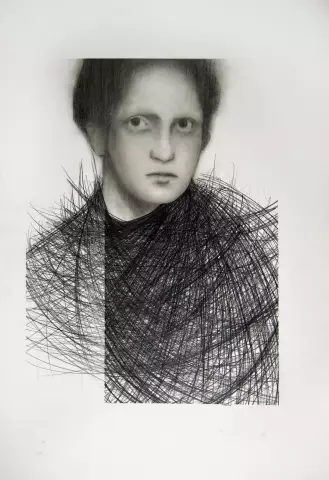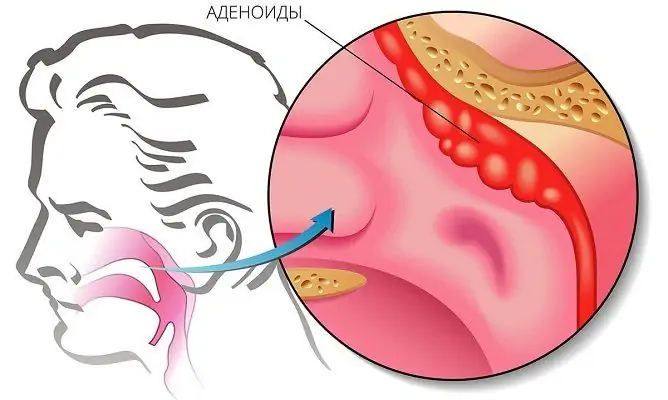- Author Rachel Wainwright [email protected].
- Public 2023-12-15 07:39.
- Last modified 2025-11-02 20:14.
Deafness
Deafness is a hearing impairment in which a person cannot hear at all, or the degree of hearing loss is so strong that the perception of speech sounds becomes impossible.
Physiology of hearing

The organ of hearing consists of sound-conducting and sound-receiving parts. Each of its constituent parts in the process of evolution are adapted for the best performance of their tasks. For example, the shape of the human auricle allows better picking up of sounds, and the ear canal improves the quality of sound transmission.
The structure of the auditory analyzer can be distinguished:
- External ear (auricle, external auditory canal);
- Middle ear (eardrum, ossicles, tympanic cavity);
- Inner ear (cochlea, semicircular canals, organ of Corti);
- Receptors;
- Pathways;
- The cortical region in the brain.
The sounds we hear are mechanical vibrations of airspace. They cause the eardrum to vibrate in the inner ear, which resonates with its natural frequency. Further transmission of vibrations is carried out with the help of the auditory ossicles (malleus, incus and stapes) and fluid (endolymph) in the labyrinth of the inner ear. The hairs of Corti's organ located in this fluid (in fact, they are sensitive cells) convert vibrational mechanical waves into an auditory nerve impulse, which is transmitted further along the nerve fibers to the brain.
Causes of deafness
It is now reliably known that there can be many reasons for deafness.
Hearing impairment can arise from constant noise at work (the so-called noise trauma), after suffering otitis media (ear inflammation), meningitis (inflammation of the meninges), or the toxic effect of antibiotics from the aminoglycoside group on the auditory nerve. Deafness can be caused by scarlet fever, respiratory viral and some other infectious diseases. Injury to the temporal bone can lead to a violation of the structure of the organ of hearing or the integrity of the auditory nerve and, as a consequence, deafness.
Types of deafness
It is quite rare that hearing is completely absent. Situations are much more common when residual audibility remains, and a person is able to distinguish very loud speech or some of its frequencies. These conditions are called hearing loss. It is difficult to clearly distinguish between the definitions of hearing loss and deafness, and it depends on the research method.
If a person has lost his hearing even before he has learned to speak, then he may remain deaf and dumb.
The following types of deafness are distinguished by origin:
- Hereditary (transmitted from generation to generation, associated with chromosomal abnormalities);
- Congenital (appeared with an adverse effect on the fetus during its intrauterine development or at the time of childbirth);
- Acquired (as a result of age-related changes in the organ of hearing, diseases, injuries, the toxic effects of certain medications, etc.).
At the site of damage to the auditory analyzer, neurosensory and conductive deafness are distinguished. Sensorineural deafness occurs when the formation of auditory impulses, their conduction or perception in the brain is impaired. Conductive deafness is caused by dysfunctions of the conductive apparatus of the auditory analyzer (in case of ear injuries, otosclerosis, etc.).
Deafness is also classified according to the degree of hearing loss.
Congenital deafness
The development of the organ of hearing in the embryo begins at 5 weeks of the prenatal period. At the 20th week of pregnancy, the unborn child already has an inner ear, comparable in maturity to an adult. From this time on, the baby in the womb begins to distinguish sounds of different intensities and frequencies.
Congenital deafness appears due to the pathological influence of certain factors on the fetus and damage to the components of the auditory analyzer. The degree of hearing loss as a result can vary widely - from complete deafness (occurs in 0.25% of newborns) to a slight decrease.
Among the causes of congenital deafness, infections (mainly viral, for example, measles, rubella, influenza), the toxic effect of medications that the mother takes during pregnancy (sulfonamides, aminoglycoside antibiotics, and others) are most often noted. In the occurrence of a number of cases of congenital deafness, the toxic effects of alcohol have been scientifically proven.
Deafness detection
Hearing impairment problems are dealt with by an audiologist, although at first patients are likely to seek help from an otolaryngologist.
Deafness can develop suddenly or gradually, rather unnoticed by the person. Complaints of deafness require additional examination methods. Modern techniques and precision equipment make it possible to objectively assess the degree of deafness and hearing residues.
Hearing impairment should be detected as early as possible after birth, because the level of development of the child and the degree of his adaptation depends on this, as well as the possibility of restoring the hearing aid.
Already in the neonatal period, many maternity hospitals conduct a screening study with special audiometers of the auditory function of all children. The audioscreening is performed by a specially trained employee before discharge from the hospital. It is a quick, painless and completely safe method for detecting congenital deafness. In adults, speech audiometry is possible.
Deafness treatment
Hearing to a large extent affects the quality of human life, therefore, with incomplete deafness, it can be corrected with the use of hearing aids that amplify sounds. This is the so-called electroacoustic correction.

Medical treatments for deafness are ineffective, most often plastic or endoprosthetics are required.
Recently, hearing aids have been used in the treatment of deafness using special electrodes implanted in the inner ear (cochlear implantation). Inner ear surgery (tympanoplasty, stapedoplasty, etc.) is intensively developing at the microscopic level.
Most often conductive types of deafness can be corrected.
YouTube video related to the article:
The information is generalized and provided for informational purposes only. At the first sign of illness, see your doctor. Self-medication is hazardous to health!






